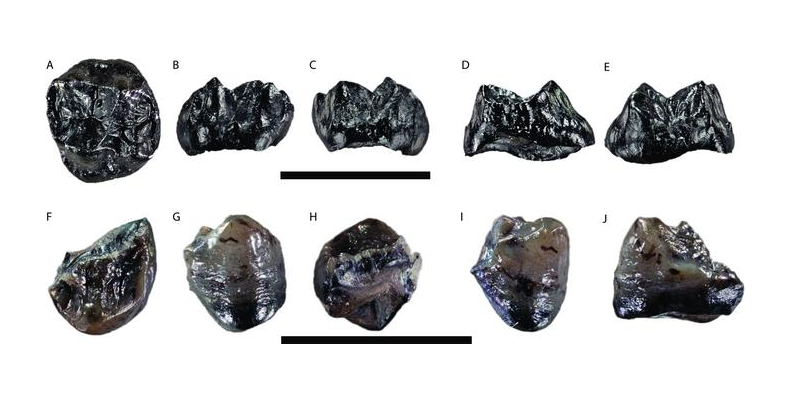Anthropologists recently identified two fossilized teeth and a single kneecap that appear to belong to a never-before-seen species of great ape: Buronius manfredschmi.
With an estimated weight of just 10 kilograms (22 pounds) – about the weight of an extremely chonky cat – the new-found species is the smallest great ape to be identified.
The remains were unearthed at the Hammerschmiede clay pit in southeast Germany at a layer dated to the late Miocene Epoch, around 11.6 million years ago.
The tiny ape wasn’t the only hominid (great ape) to live here during this period. Between 2015 and 2018, researchers digging at the Hammerschmiede fossil site discovered the remains of Danuvius guggenmosi, another species of great ape that walked on two legs.
Judging by their size difference, the researchers believe these two apes led very different lifestyles. The kneecap and teeth of Buronius suggest they were skilled tree climbers that ate a diet of soft foods such as leaves, while Danuvius had a surprisingly upright posture, suggesting it spent most of its time on the ground.

The fossilized teeth of Buronius manfredschmidi suggest it was a very small guy.
By occupying different niches, the two species were able to share a habitat without directly competing for resources, much like the relationship between the modern gibbons and orangutans that share habitats in Borneo and Sumatra.
The discovery of Buronius makes Hammerschmiede the only Miocene site in Europe that’s known to have more than one species of extinct ape. The researchers believe their new study should encourage others to re-examine fossils from other European sites and potentially reveal more examples of dual-ape cohabiting behavior.
Today, great apes only live in tropical forests in Central Africa and Southeast Asia (not including Homo sapiens, which inhabit every continent on Earth). Europe was once home to several species of great ape, but they all drifted into extinction during the Late Miocene, a period between 11.63 million to 5.33 million years ago.
Local climate change was likely to be the deathblow. Around 9 million years ago, Europe’s forests receded and became replaced with grasslands, drastically changing the habitat and food supply of the region’s great apes.
Very little is known about the new species Buronius – after all, two teeth and a kneecap are all we have left of them – but it’s possible to speculate that they fell victim to this climatic change along with Europe’s other great apes.
The new study is published in the journal PLoS ONE.
Source Link: New Species Of Great Ape From Ancient Germany Is The Smallest Ever Found